When people think of providing food for hummingbirds, they may first think of providing feeders, and then they probably think of nectar plants — especially plants with tubular red flowers. It’s true that hummers like tubular red flowers, but we’ve also seen them nectaring on flowers of other colors and other shapes.
Most people don’t realize that insects are an important food for hummingbirds, too.
And as with other birds, insects are essential food for their young. Of course, they aren’t going for the one-inch caterpillars or other big insects, but rather gnats and other little insects.
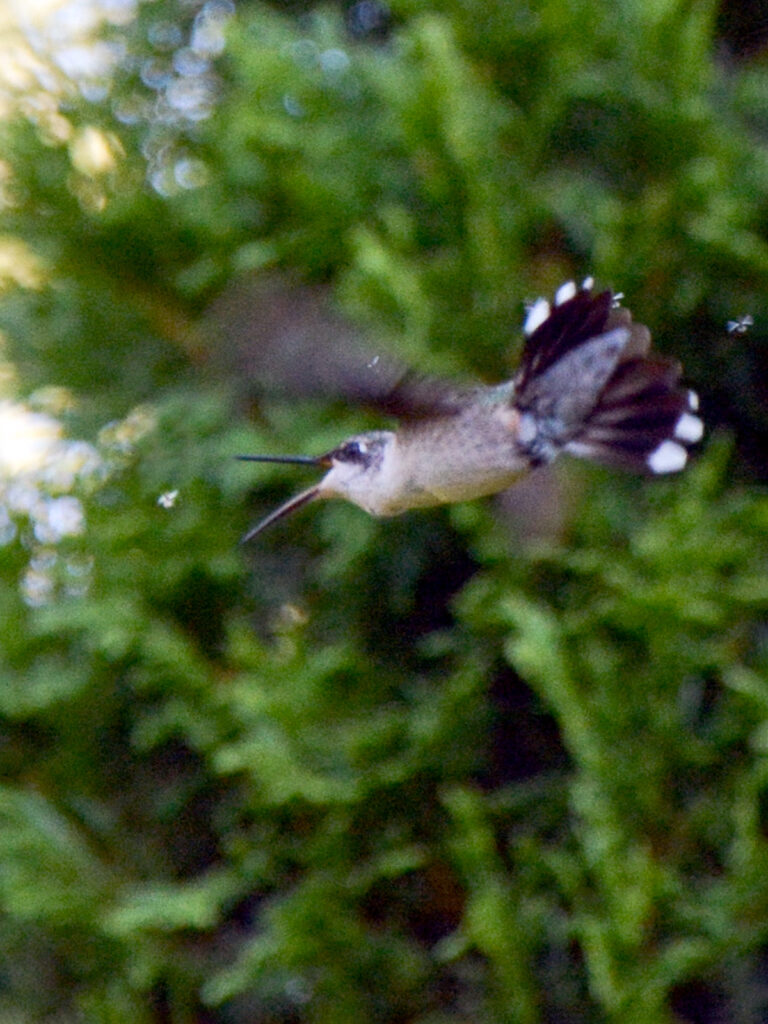
Favorite nectar plants native to our region
Although most people think hummingbirds only like red flowers, we’ve seen them nectaring at many flowers that aren’t red, too.
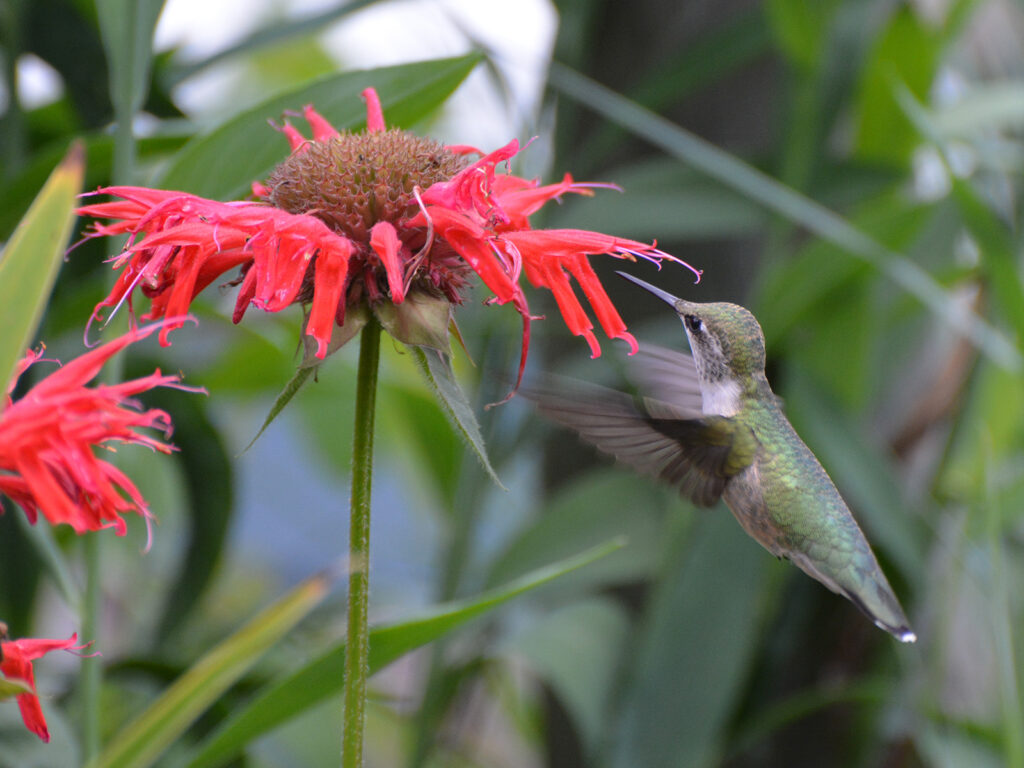
Beebalm (Monarda didyma)
I see hummingbirds nectaring at the beebalm as much as on any other plant.
Beebalm is very easy to grow. (This plant is also good for bees and other insects, too.)
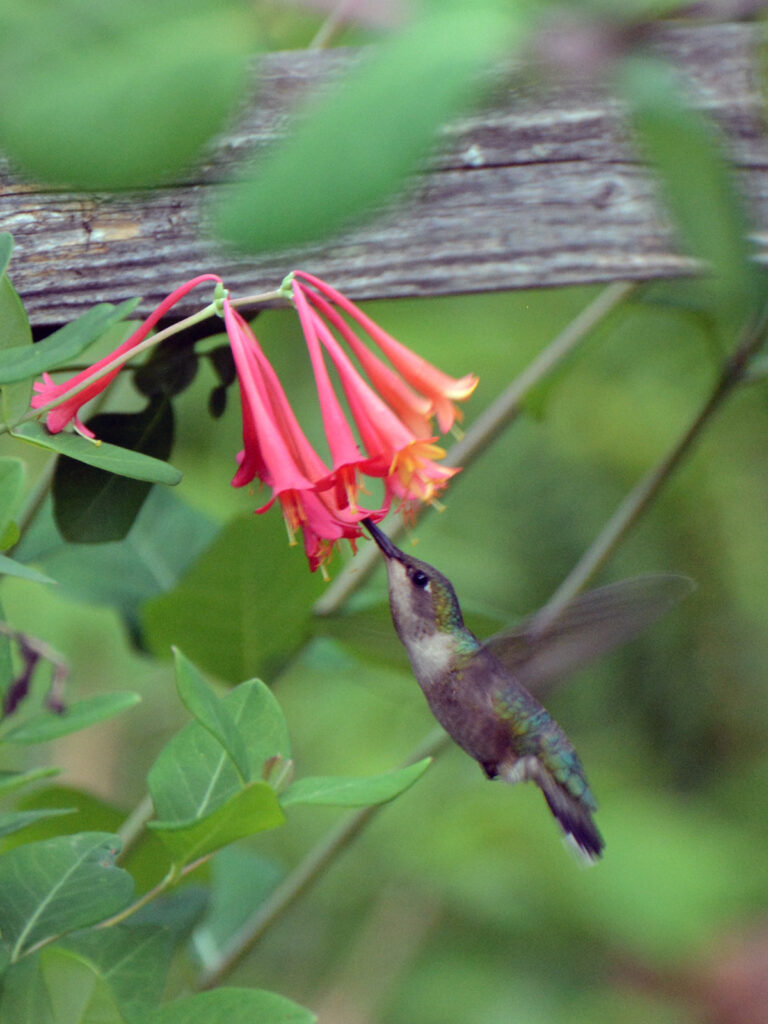
Coral honeysuckle (Lonicera sempervirens)
The hummingbird also loves these native coral honeysuckle flowers, and I love this native honeysuckle as much as the hummingbird does. It blooms much of the summer and has beautiful flowers.
Many years ago we were sold a Japanese honeysuckle vine. It did have a lovely fragrance, but we got rid of it because these non-native invasive plants just aren’t good for the birds and the world we’re trying to protect.
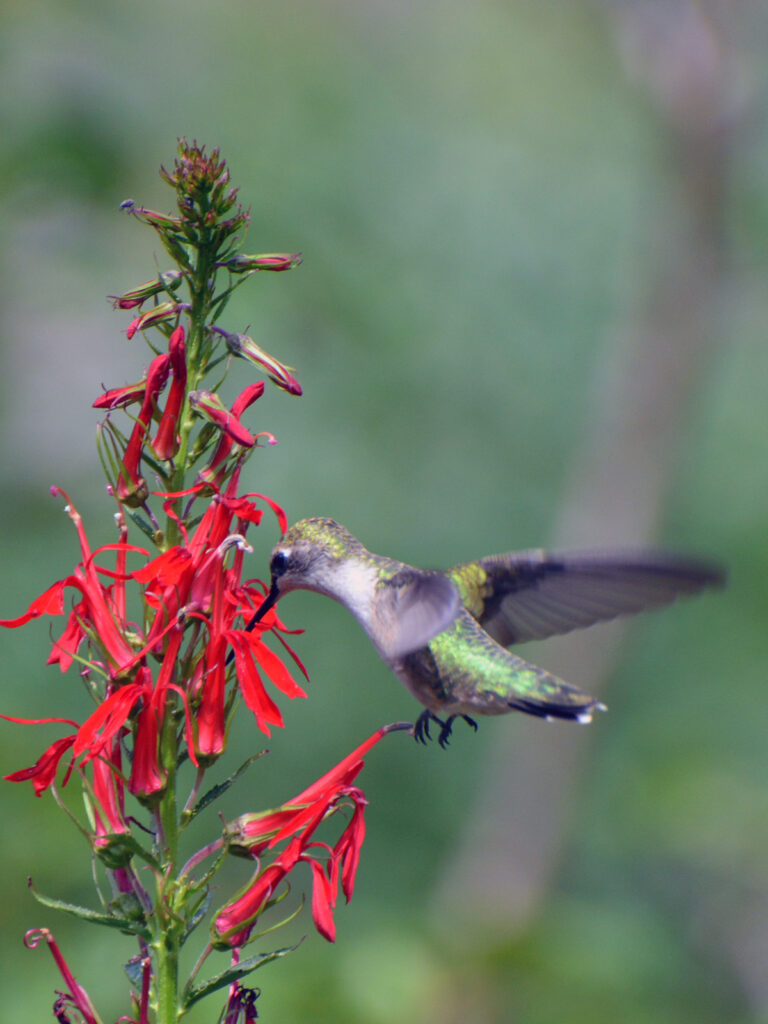
Cardinal flower (Lobelia cardinalis)
This cardinal flower lobelia is a beautiful native plant — and this brilliant red flower is, not surprisingly, a hummingbird favorite.
Given the correct moist conditions, this plant is easy to grow, but seemingly not long-lived. After a few attempts, we’ve finally established a good colony first in our stream, then even in regular soil, though I do provide supplemental water at times.
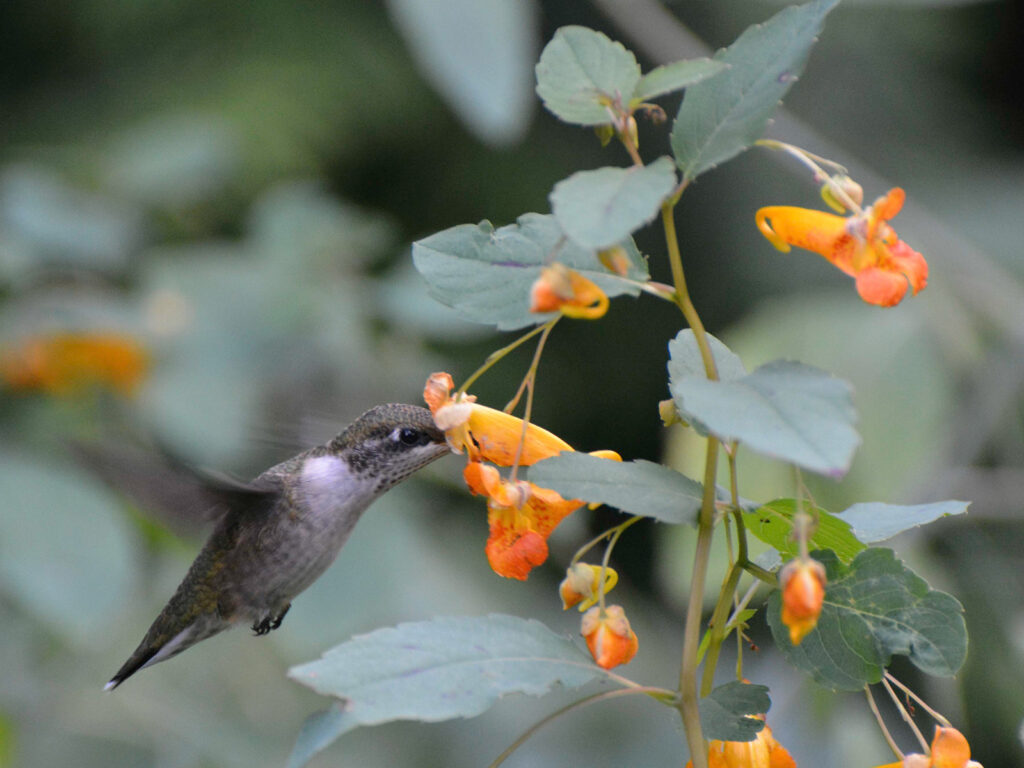
Jewelweed (Impatiens capensis) or (Impatiens pallida)
Jewelweed is the native variety of the impatiens bedding plant. It’s a hummingbird favorite and also a favorite of bumble bees, doubling its benefits. Like the impatiens sold as bedding plants (which are NOT native and apparently devoid of nectar), it likes to be moist. I don’t supply any additional watering; it just finds the moister places in the yard.
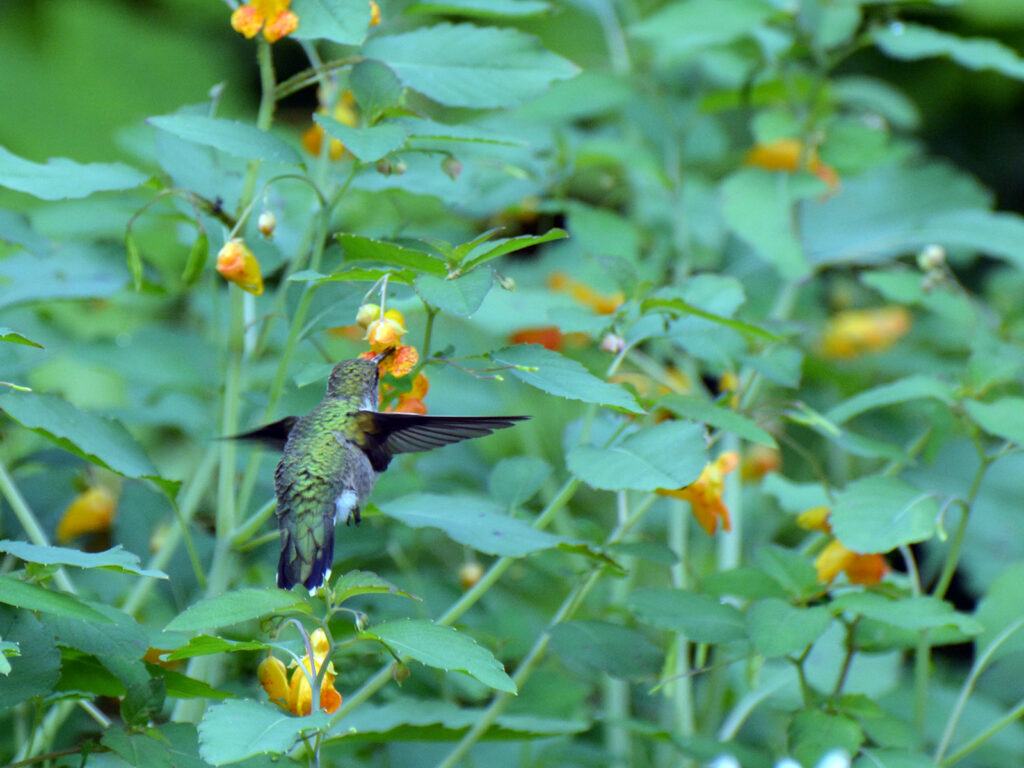
And it WILL find locations. In fact, if you plant one, you’ll have hundreds (at least). The good news is that they’re extremely easy to pull out, which I do frequently. This minor inconvenience is well worth its great habitat benefits. I really enjoy seeing the hummingbirds and bees they attract. Note: This is an annual plant, my only one.
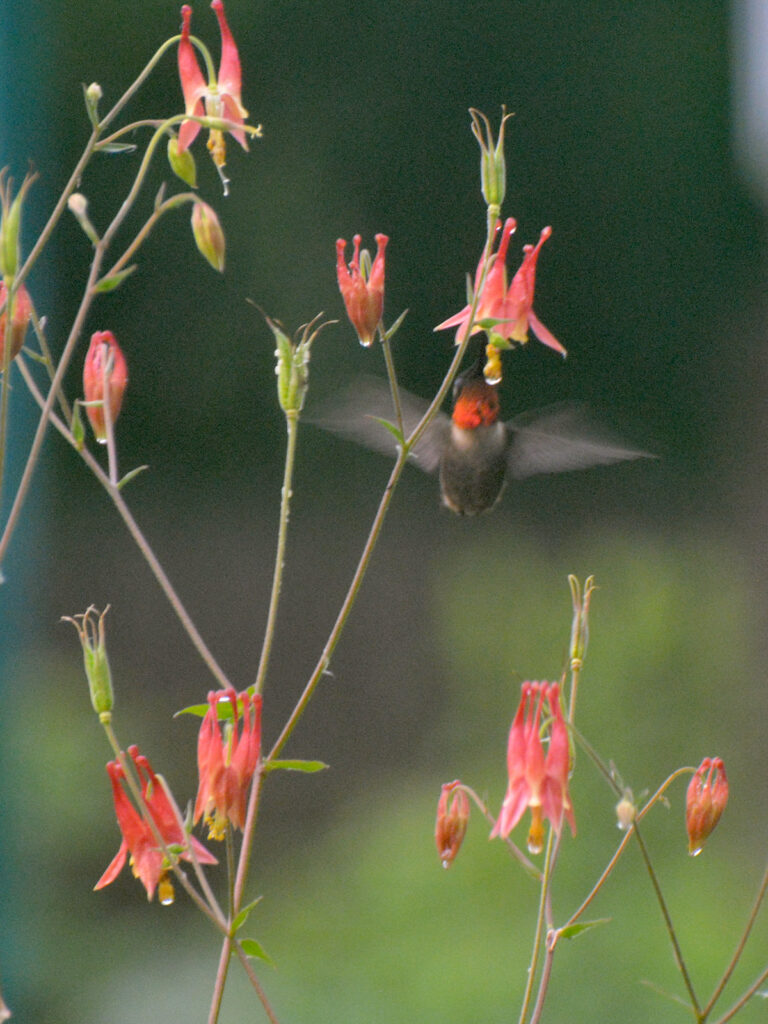
Red columbine (Aquilegia canadensis)
There are lots of hybrids out there, but this native is the real thing. It’s pretty easy to grow once it gets established, and seedlings will pop up here and there. It readily hybridizes with other columbines, so I try to confine my legacy hybrids to the front yard until I can remove them all.
I finally managed to get a photo of a hummer drinking nectar from a columbine — though only through the window. And this happened to be a male with his beautiful red gorget.
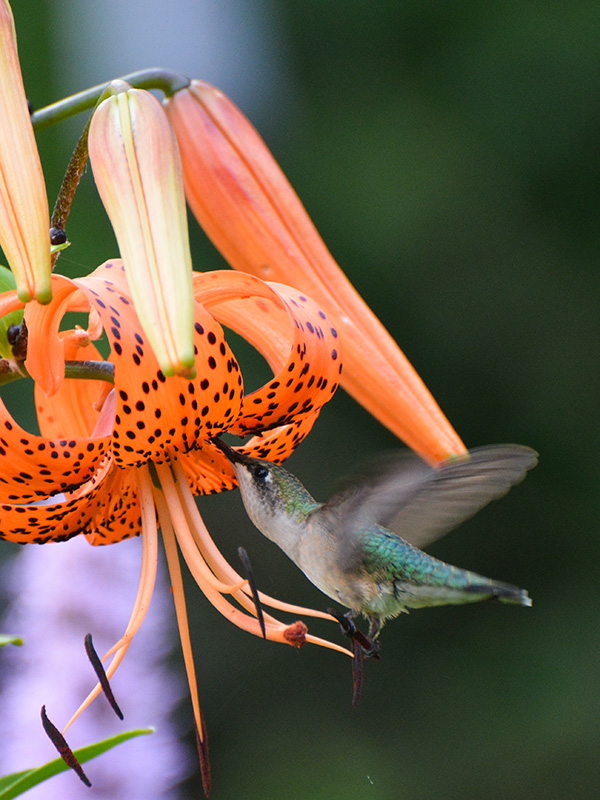
This plant was given to me long ago as the native Turk’s cap lily (Lilium superbum), but now I’ve found that it’s a non-native look-alike, the Tiger lily (Lilium lancifolium). The hummers did like it, though. We’re letting this non-native die out (helped along by the Eurasian scarlet lily beetle), but in 2017 we planted a “genuine” Turk’s cap we got at our HGCNY native plant sale.
I’m sure the hummers would like it but so far the deer have eaten it each year right as it was about to bloom.
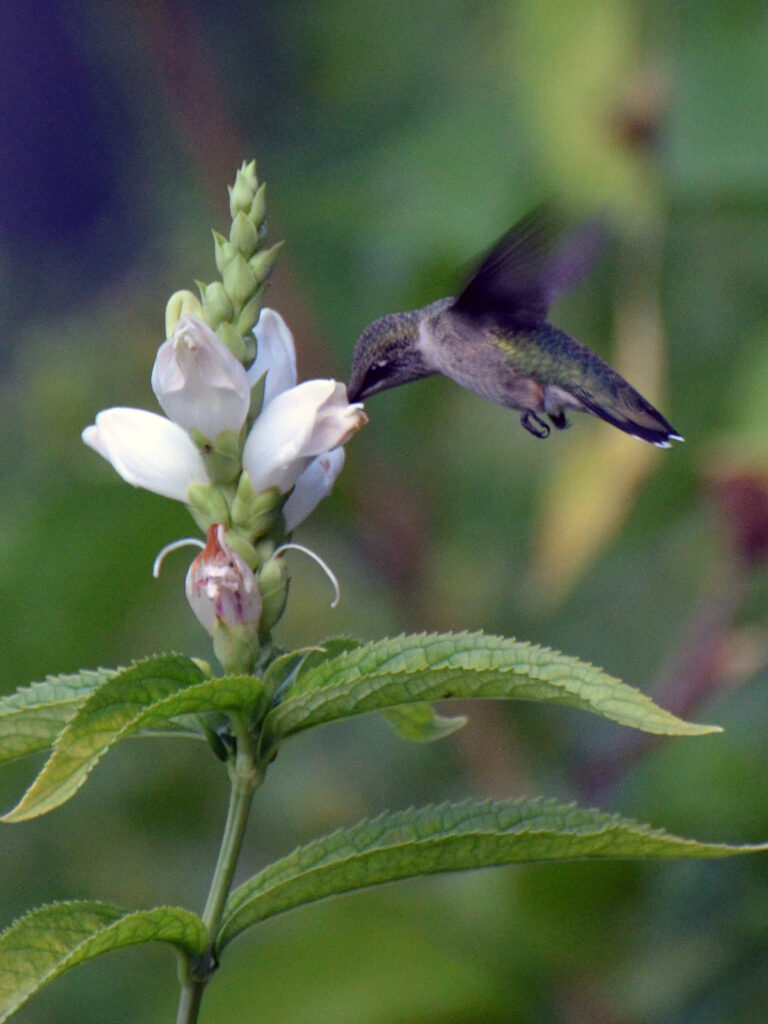
White turtlehead (Chelone glabra)
This is also a host plant for Baltimore checkerspot butterflies.
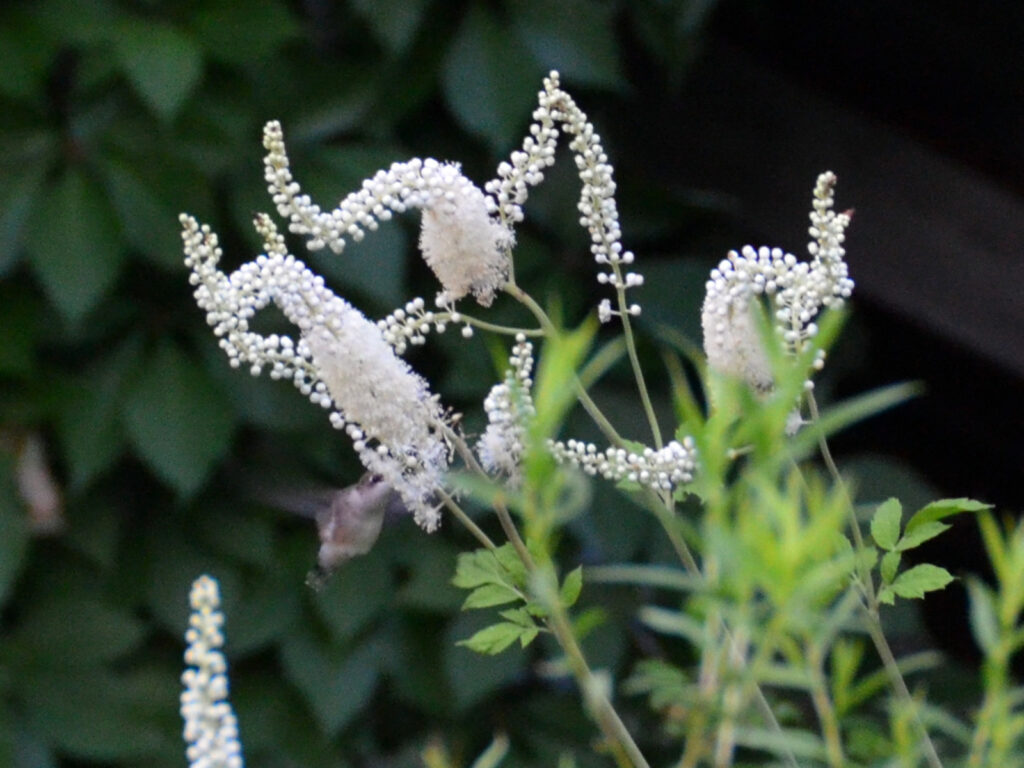
Black cohosh (Cimicifuga racemosa)
It seems that most of the plants in my yard that bees like, such as this black cohosh, the hummingbird likes, too.
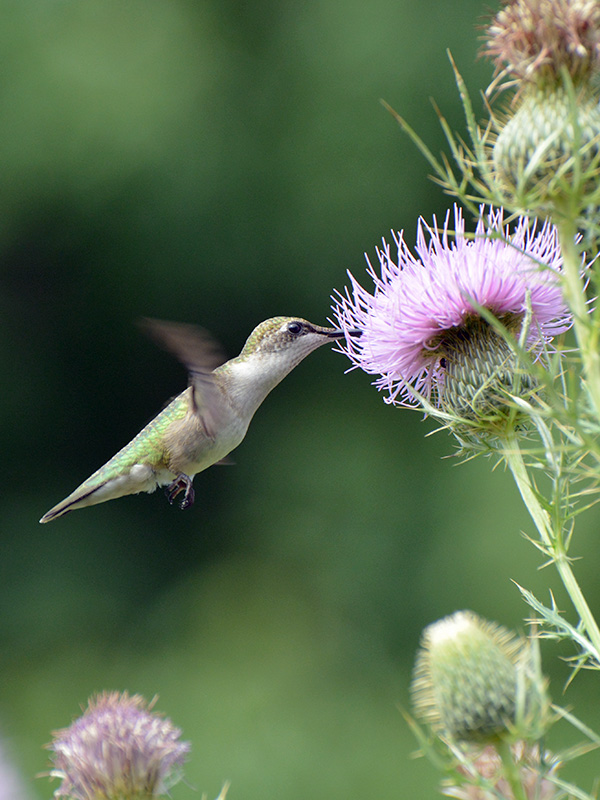
Pasture thistle (Cirsium discolor)
We were excited to see this hummingbird enjoying our native thistle plant.
This NATIVE pasture thistle has lived up to its reputation as a nectar-filled plant, popular with hummers, butterflies, and bees.
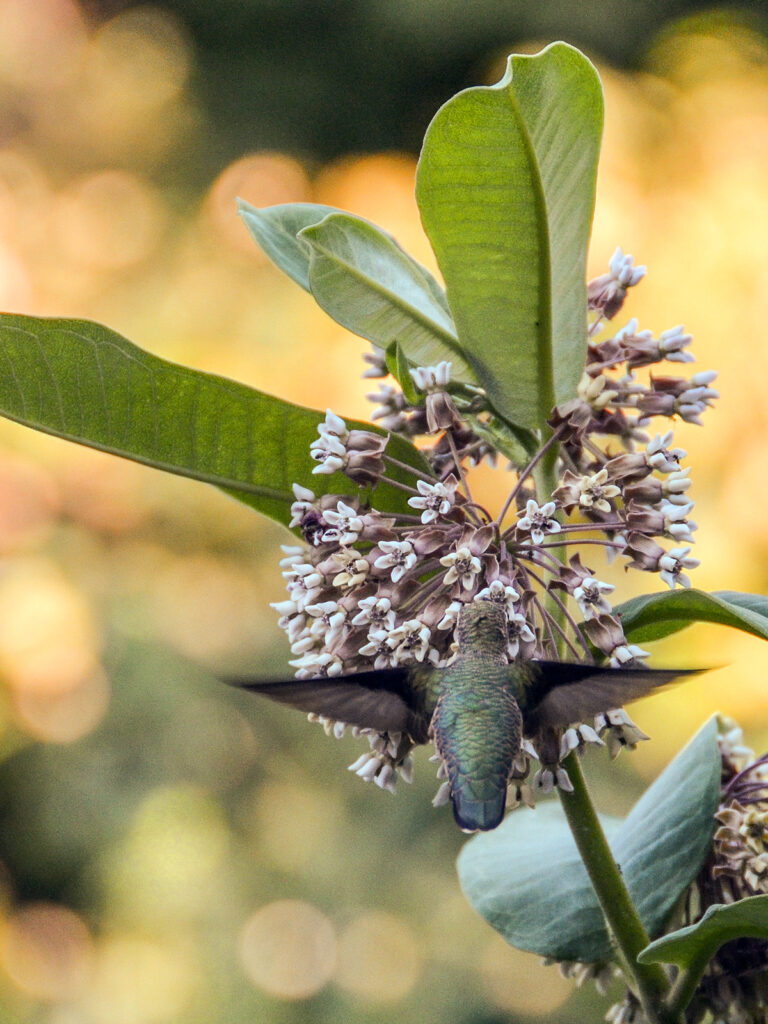
Milkweed is essential for monarch butterflies, and it’s also an important nectar plant for other creatures, such as bees. This hummingbird enjoyed it, too.
This happens to be common milkweed (Asclepias syriaca).
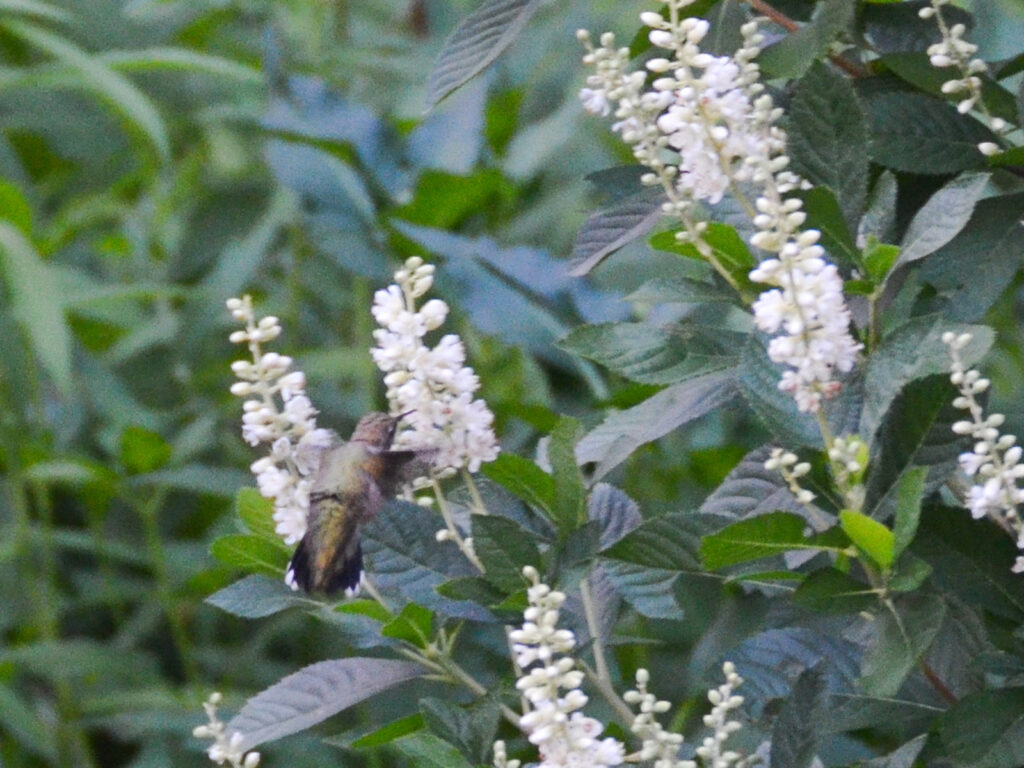
Summersweet (Clethra alnifolia)
These flowers are full of nectar, so this hummer loves it.
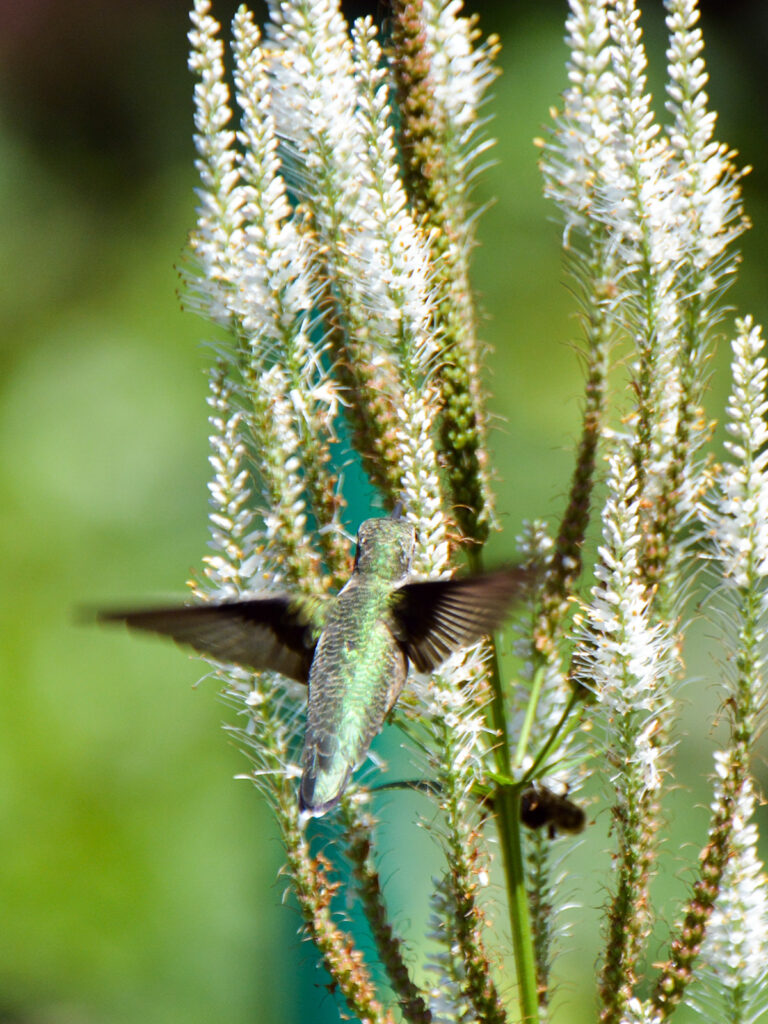
Culver’s root (Veronicastrum virginicum)
This is one of my favorites, but it’s also a favorite of many creatures, too, such as this hummer.
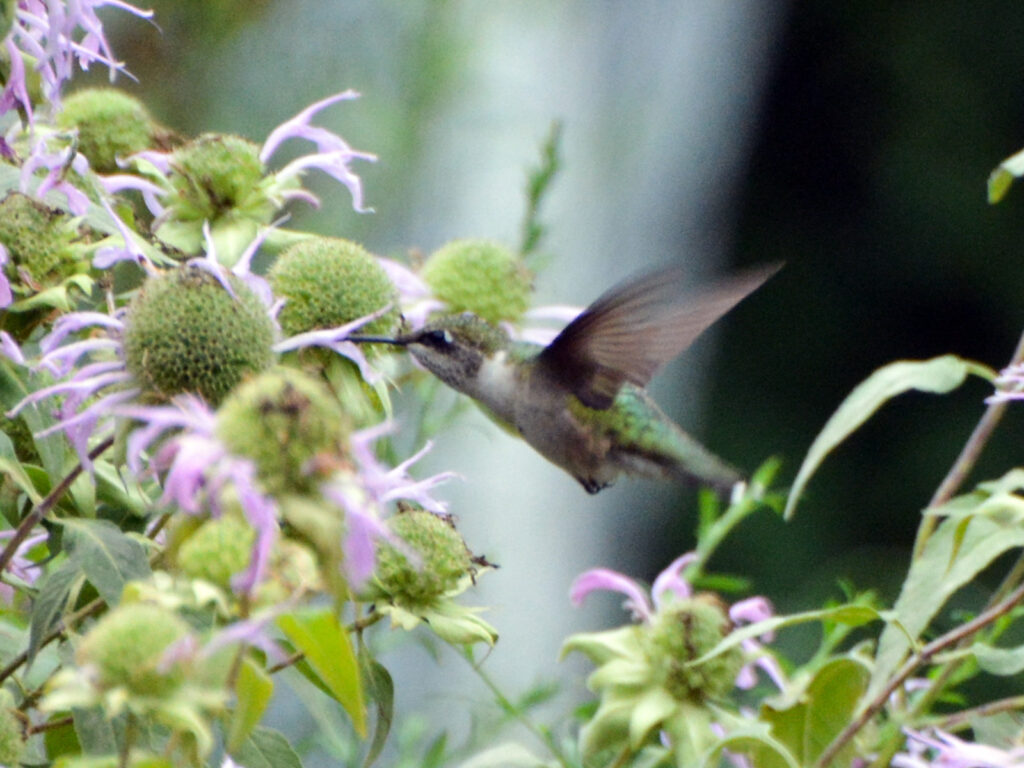
Wild bergamot (Monarda fistulosa)
Of course, hummers love the red monarda, but they — like so many other little creatures — love this one, too.
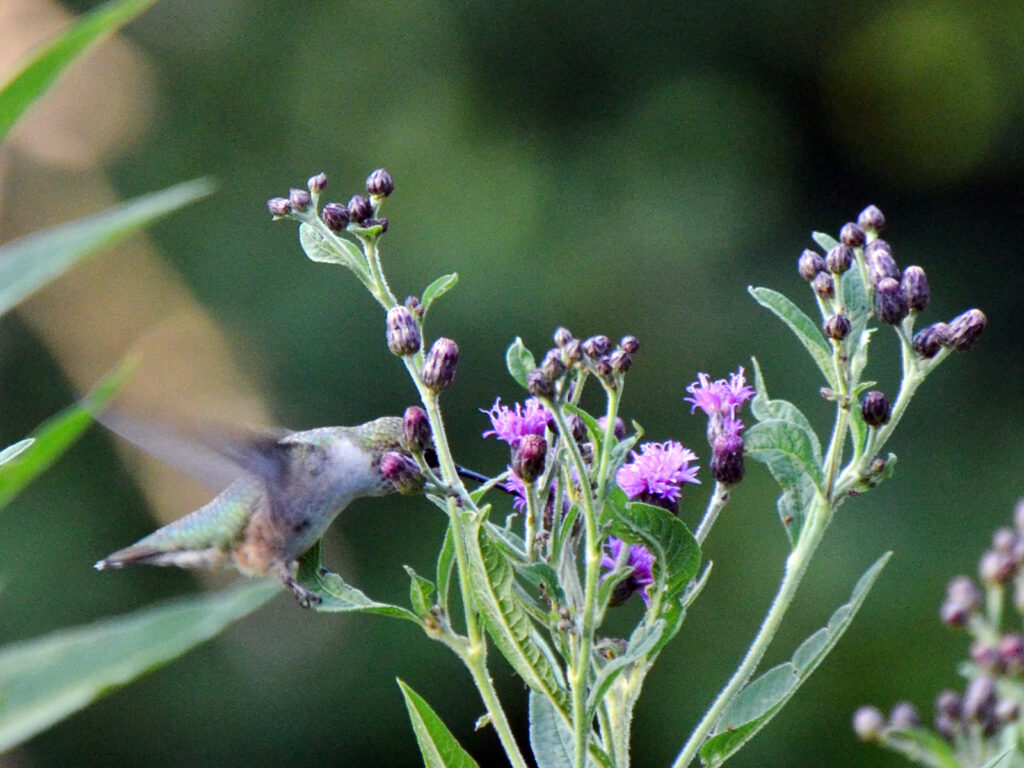
New York ironweed (Vernonia noveboracensis)
This is a late-summer flowering plant that butterflies love, and this hummingbird does, too.
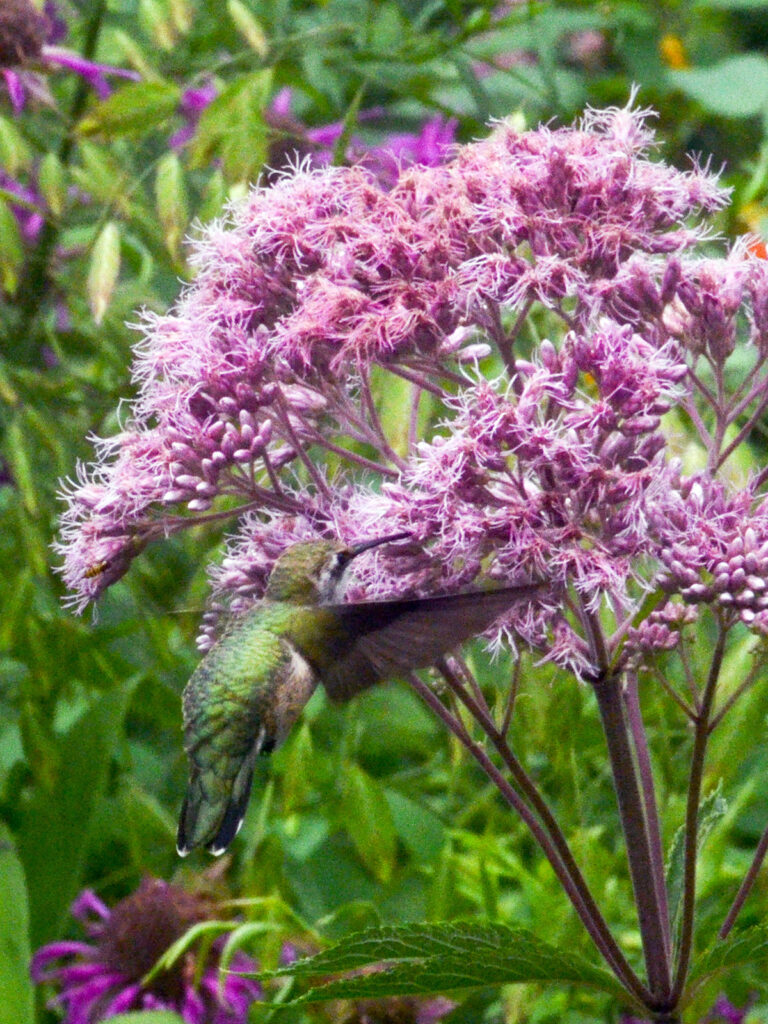
Joe-pye (Eutrochium sp.)
And like so many other creatures, I’ve seen hummers using joe-pye.
Is it interested in the nectar or in the little insects that are surely there?
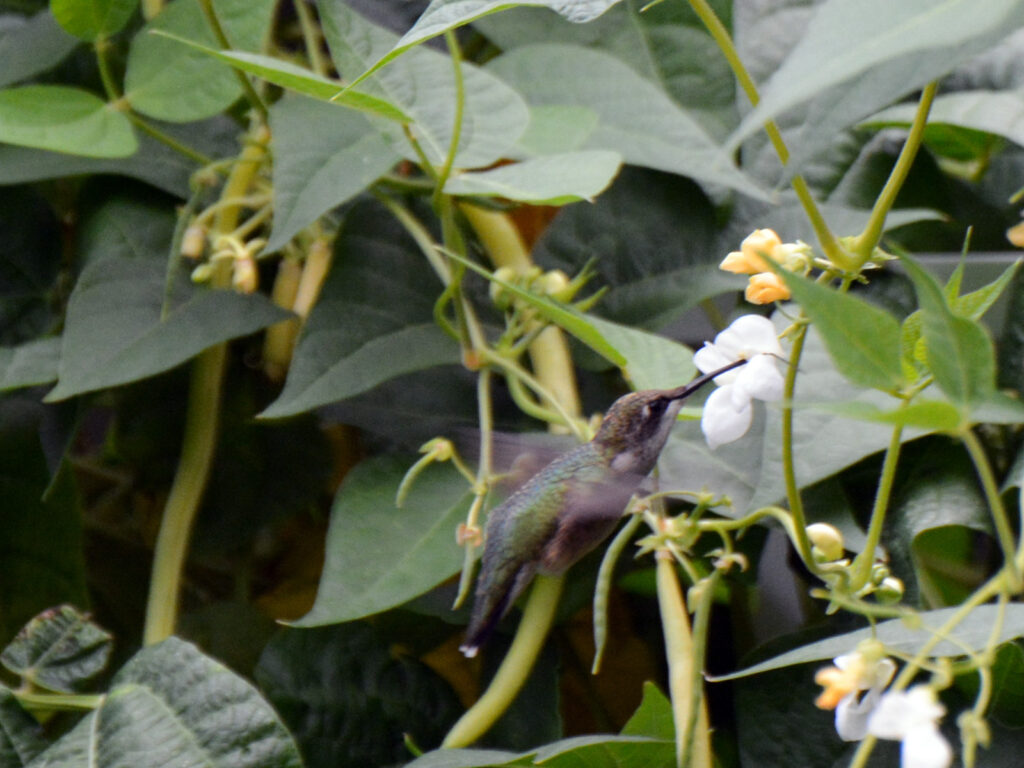
Not native, but fun to see!
Most surprising for me was to see a hummingbird spending quite a bit of time nectaring on our string bean plants! She must have been getting a lot of nectar since she stayed for a while.
So is she partly responsible for the surplus of beans we’re eating day after day?
Resources
- Audubon:
- Hummingbird-friendly Yards: Ecosystems with a high percentage of native plants will produce a higher volume of nectar than exotic plantings, and thus support a greater concentration of insects and spiders available as prey for hummingbirds and other birds
- Journey North:
- Wired:
- See this video about how hummingbirds really drink—not by capillary action as was previously thought, but by their tongues trapping nectar by curling around it.
- Choose Natives:
- NPR:
- Science Friday a slightly different view, along with a video of how dogs’ tongues work.
- Hilton Pond:
- Top Ten native hummingbird plants (Note these are native to South Carolina)
- Operation Rubythroat, a winter expedition to Central America to band hummingbirds
- The Humane Gardener:
Reflections
Have you ever observed a hummingbird moving about in an aerial dance among the flowers— a living prismatic gem … it is a creature of such fairy-like loveliness as to mock all description.
~ W. H. Hudson, Green Mansions
